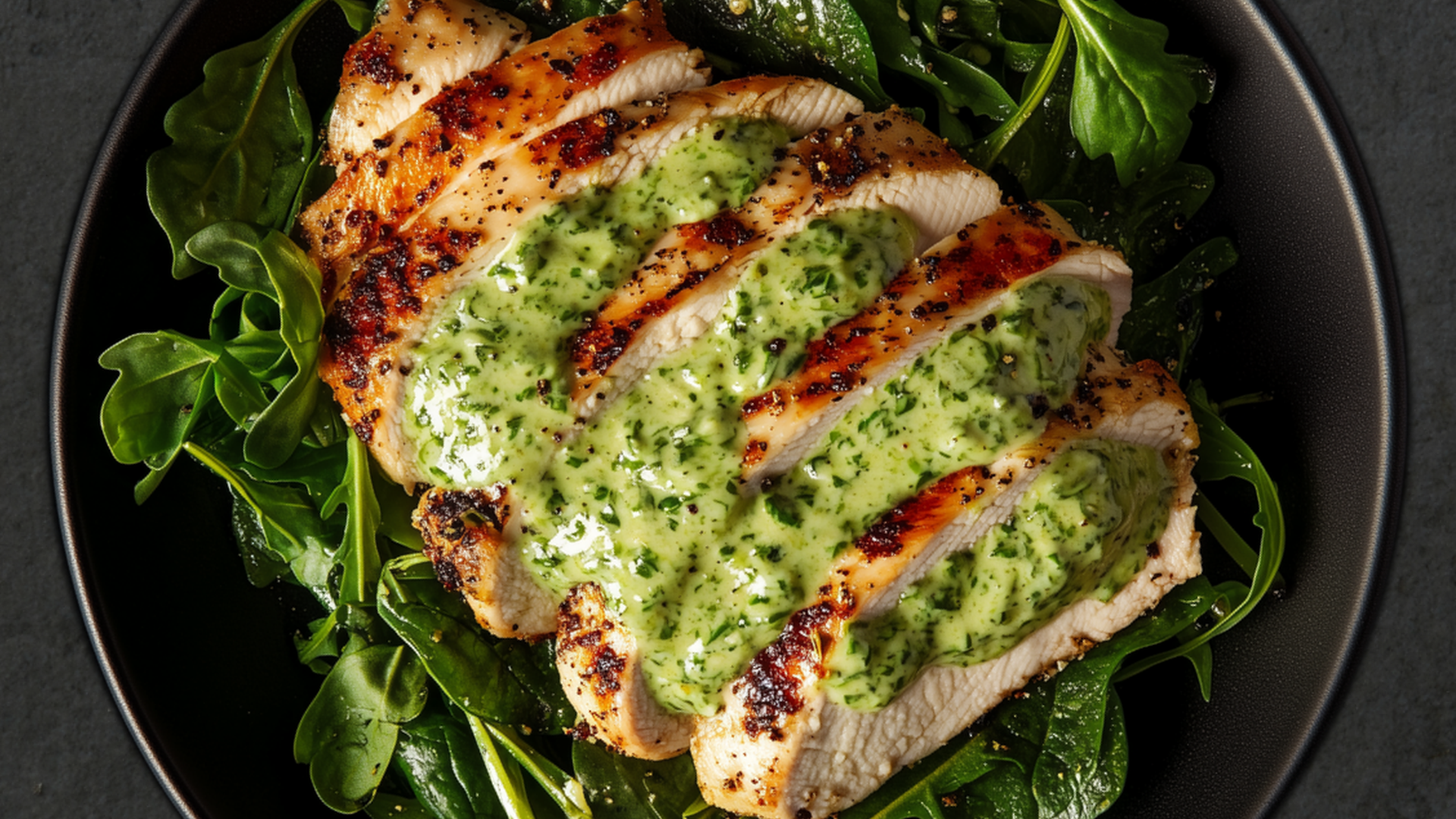The
Daily
Fix
Rest
Green Goddess Chicken
Metabolic Flexibility to Get Healthier

Rest day
Seared chicken breast topped with a rich green goddess sauce, served over a bed of fresh arugula.
Webinar with Mike T. Nelson
Enjoy the recovery time, or make-up anything you missed from last week.
Ingredients
6 oz chicken breast, thinly sliced
1 Tbsp butter (for cooking)
Salt and pepper, to taste
For the Green Goddess Sauce:
½ avocado
2 Tbsp sour cream
1 Tbsp mayonnaise (sugar-free, clean ingredients)
1 Tbsp fresh parsley, chopped
1 Tbsp fresh basil, chopped
1 Tbsp fresh chives, chopped
1 tsp lemon juice
½ clove garlic, minced
Salt and pepper, to taste
For the Lemon-Tossed Greens:
1 cup arugula or spinach
1 tsp olive oil
1 tsp lemon juice
Salt and pepper, to taste
Macronutrients
Protein: 42g
Fat: 48g
Carbs: 5g
Preparation
Season the chicken breast (6 oz) with salt and pepper. Heat a skillet over medium heat and melt the butter (1 Tbsp) for cooking. Add the sliced chicken and sear for 3–4 minutes per side until golden and cooked through. Remove from heat and let the chicken rest.
In a small bowl or food processor, combine the avocado (½ avocado), sour cream (2 Tbsp), mayonnaise (1 Tbsp), chopped parsley (1 Tbsp), chopped basil (1 Tbsp), chopped chives (1 Tbsp), lemon juice (1 tsp), and minced garlic (½ clove). Blend or mash until smooth and creamy. Season the sauce with salt and pepper to taste.
In a separate bowl, toss the arugula or spinach (1 cup) with the olive oil (1 tsp), lemon juice (1 tsp), and a pinch of salt and pepper until evenly coated.
To assemble, spread the lemon-tossed greens on a plate, top with the seared chicken, and spoon the green goddess sauce generously over the chicken. Serve immediately.
This webinar with Dr. Mike T. Nelson dives deep into metabolic flexibility, the body’s ability to efficiently switch between burning fats and carbohydrates based on activity, diet, and fasting states. He explains that this adaptability is crucial for metabolic health, athletic performance, and longevity. Impaired flexibility is linked to conditions like metabolic syndrome, while improving it can enhance energy efficiency and recovery. Fuel use depends on exercise intensity: fats dominate during low-intensity activity, while carbohydrates are key during high-effort sessions. Strategic training, intermittent fasting, and tailored nutrition can shift the body’s “crossover point” to optimize fuel use.
Nelson also highlights the role of muscle mass and quality in metabolic rate and emphasizes personalized approaches using technologies like indirect calorimetry and muscle oxygen sensors. Tools like these can help individuals tailor their training and nutrition for better fat oxidation, performance, and recovery. Practical strategies include fasted morning walks, targeted carb timing, resistance training, and gradual fasting protocols. Ultimately, Nelson encourages a data-informed, iterative approach: combining science, self-assessment, and consistent action to build sustainable metabolic health.
This BSI Medical Society Webinar was streamed on May 14th, 2025.
A 10-minute summary of the webinar is available free, for anyone, while the full webinar is available for Medical Society Members and MetFix affiliates in their dashboard.

THURSDAY 250710